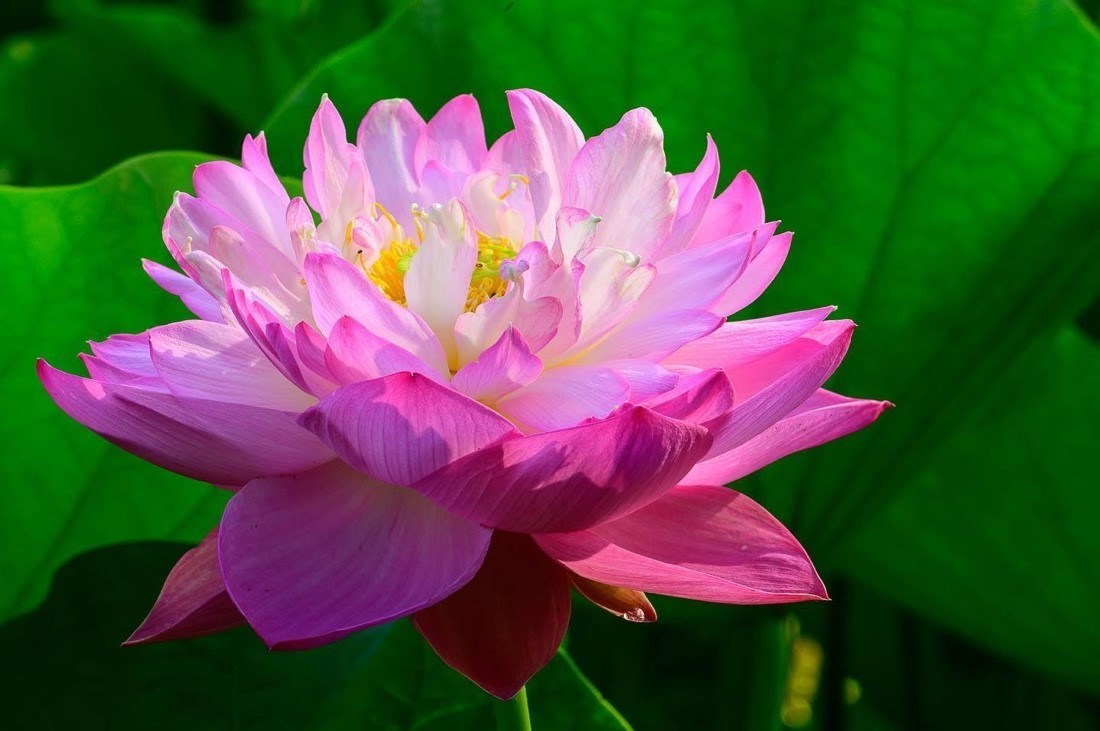Graceful, serene, and steeped in symbolism, the Lotus is more than just a flower—it’s an icon of purity and enlightenment. Rising above the still water on long, slender stalks, the lotus bloom evokes a timeless elegance that captivates both garden lovers and spiritual seekers alike.
Native to Asia, the lotus thrives in warm, sunny conditions and is ideal for water gardens, ponds, and even large containers. Though it may seem delicate, this aquatic perennial is remarkably resilient and rewards patience with stunning blooms and lush foliage throughout summer.

Portrait of the Lotus
Belonging to the Nelumbonaceae family, the lotus is distinct from the water lily despite their similar appearance. Lotus leaves rise above the water on thick stems, and their flowers are held high—majestic and untouchable. The most well-known species is Nelumbo nucifera, often called the sacred or Indian lotus.
- Type: Aquatic perennial
- Family: Nelumbonaceae
- Common Names: Sacred Lotus, Indian Lotus, Bean of India
Foliage and Form
Lotus leaves are large, round, and water-repellent, creating dramatic visual impact as they float or rise on long stalks above the water. Their elegant form makes them as beautiful as the flowers themselves.
- Height: 1–1.5 m (3–5 ft)
- Spread: 1–2 m (3–6 ft)
- Growth Habit: Upright stems with floating or emergent leaves
Blooms and Fragrance
Lotus flowers are breathtaking, with dozens of petals unfurling into perfect symmetry. Colors vary from white and pink to creamy yellow, often with a subtle, clean fragrance.
- Bloom Time: June–August
- Color: Pink, white, pale yellow
- Fragrance: Light, clean, slightly fruity
The Right Time to Plant, Prune, and Enjoy Lotus
| Month | Planting | Flowering | Pruning |
|---|---|---|---|
| January | ❌ | ❌ | ✅ Remove dead foliage |
| February | ❌ | ❌ | ✅ Clean old growth |
| March | ✅ (start indoors or warm) | ❌ | ❌ |
| April | ✅ (tubers outdoors) | ❌ | ❌ |
| May | ✅ | ✅ (beginning) | ❌ |
| June | ❌ | ✅ Peak bloom | ❌ |
| July | ❌ | ✅ Peak bloom | ❌ |
| August | ❌ | ✅ | ❌ |
| September | ❌ | ✅ (late) | ✅ Remove spent flowers |
| October | ❌ | ❌ | ✅ Trim leaves |
| November | ❌ | ❌ | ✅ Lift tubers if overwintering |
| December | ❌ | ❌ | ✅ Store tubers (cold zones) |
✅ = Recommended ❌ = Not advised
💡 Tip: For colder climates, lift tubers in November and store in damp peat moss to overwinter safely indoors.
Watering, Sunlight and Environment for Lotus
Watering
- Lotus is an aquatic plant: it must be grown in still, shallow water.
- Maintain a water level of 15–30 cm (6–12 in) above soil level.
Sunlight
- Full sun is essential—lotus needs 6–8 hours of direct sunlight daily to bloom.
- In low light, it will grow leaves but won’t flower.
Indoor vs Outdoor
- Best suited for outdoor ponds or containers.
- Can be grown indoors in large tubs with adequate light, but flowering is rare.
Temperature
- Prefers warm summer temperatures (25–35°C / 77–95°F).
- Hardy tubers survive winters down to USDA zone 4 if kept under water.
Ideal Soil Conditions for Growing Lotus
| Soil Feature | Optimal Condition | Why It Matters |
|---|---|---|
| Soil Type | Heavy clay or loamy soil | Anchors tubers and supports growth |
| Texture | Dense and fine-grained | Prevents floating in water |
| Drainage | Not required (submerged soil) | Lotus grows in standing water |
| Moisture | Constantly submerged | Mimics natural aquatic habitat |
| Soil pH | Neutral to slightly acidic (6.5–7.5) | Promotes healthy bloom development |
| Fertility | High (slow-release aquatic fertilizer) | Encourages lush flowers and leaves |
Common Problems & Solutions
| Issue 🐾 | Symptoms 🔍 | Solutions 🛠️ |
|---|---|---|
| No blooms 🌿 | Lots of leaves, no flowers | Increase sunlight, check water depth |
| Rotting tubers 💧 | Soft, smelly tubers | Improve overwintering storage, aerate |
| Aphids 🐜 | Sticky residue on buds/leaves | Rinse off or apply neem oil |
| Leaf yellowing 🍂 | Nutrient deficiency | Use aquatic plant fertilizer monthly |
| Algae overgrowth 🧪 | Cloudy water, green film | Limit nutrients, use pond-friendly algae controls |
The lotus embodies balance and beauty, floating calmly above its rooted past. It rewards attentive gardeners with mesmerizing blooms and architectural foliage, offering not only visual drama but deep cultural and spiritual resonance. Add it to your pond or container water garden, and it becomes more than a plant—it becomes a symbol of peace and renewal.